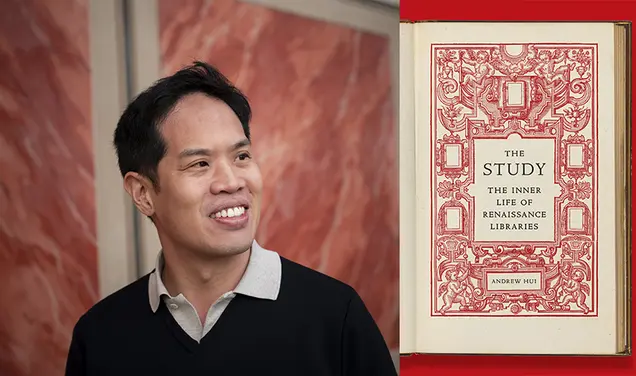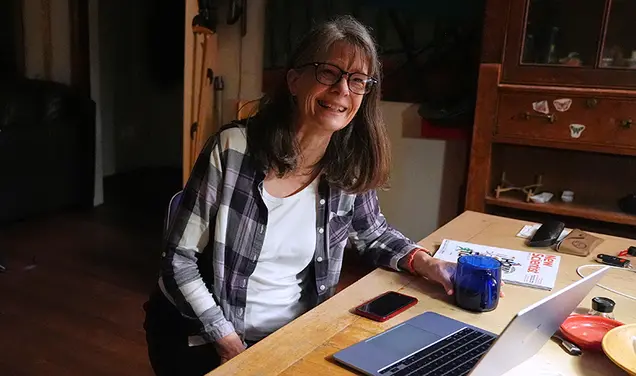New York Times reporter James Barron ’77 is the author of Piano: The Making of a Steinway Concert Grand, which came out in paperback this month. He also narrates the Times’ daily front-page summary, broadcast on WQXR-FM and available as a podcast on iTunes.
When I was a teenager, I gave serious thought to going to music school as a pianist. I had won some local piano competitions, and playing the piano seemed to be the magical thing that I could see myself doing in life. I applied to the Eastman School of Music, but rattled by a problem-laden airplane flight — mechanical trouble, misplaced luggage, you name it — I played a so-so audition. My father, who had gone along, was having jitters of his own. A career intelligence analyst, he feared that the Nixon administration would force an early-retirement plan on the civil service system, leaving him jobless just as I went off to college. For a Depression baby like Dad, there was no greater fear, until he thought of one: How would I support myself after graduation? He argued against music school. I argued back, but eventually came to the same conclusion, though for a different reason. I decided that I really wasn’t good enough for a career in music, and all but stopped playing the piano. I went to Princeton instead, where I would major in history.
I had inherited my father’s financial fears, though. I tried out for the University Press Club, which promised money for writing newspaper stories — the new magical thing. In the 30 years since then, I have written occasional features about music and musicians, but I’ve mainly covered other subjects.
Still, my knowledge of — and feelings for — the piano, particularly Steinways, remained with me. My parents had bought my music teacher’s Steinway grand when she retired. I was 12 then, and the Steinway replaced a Wurlitzer upright in our living room. Mrs. Sperling’s piano made me feel grown-up, polished, worldly. When I was 8 and started taking lessons, Mrs. Sperling’s piano had a mahogany finish. The summer before she retired, she had the piano “ebonized,” the term Steinway uses when it sprays wood black to look like real ebony, which is more expensive. Her piano was a Model M, which Steinway had introduced in 1912 as a “living-room grand,” shorter than the concert grands and “music-room” models it had made before. I learned that from a little green book that she gave me. It had been published in the ’50s and was filled with photographs of famous pianists and stories about the company that made their pianos.
The earlier life of Mrs. Sperling’s piano had been as glamorous and far-flung as anything in the book: It had followed her from hotel to hotel as she toured Europe. By the time the movers hauled it out of her studio and into our living room, her piano was middle-aged. Only later did I connect the dates: It was made in 1915, the year in which my mother was born, as was Frank Sinatra. My father, never a Sinatra fan, would disapprove, but I’ll say it anyway: It was a very good year. And Mrs. Sperling’s piano — as I still think of it — looked just right in our living room. I worked my way through Haydn sonatas and Mozart concertos and pieces by the 20th-century Argentinian composer Albert Ginastera.
Fast-forward to the winter of 2002. I was on vacation in Florida, driving back from the beach just as All Things Considered introduced a story about a guy who was trying to figure out what made Antonio Stradivari’s violins so special. Was it the wood? The glue? The varnish? Thinking about it, I remembered a visit I had made with my father to the Steinway factory in Queens many years before, and decided to watch one piano being built from start to finish.
That was the beginning of Piano, a biography whose main character is about the size of a bathtub, has 88 keys and 230-some strings, and was made around the corner from LaGuardia Airport in a drafty jumble of buildings that smelled of glue and lacquer. The piano I followed was known by its case number, K0862. The workers assembling its Rube Goldbergian collection of tiny parts under the lid seemed to be building K0862 the way they had built Mrs. Sperling’s, 70 years before. Some of the hand-operated drills and saws looked older than the workers who used them.
How did K0862 turn out? I decided to answer the question of how good it was by asking well-known pianists to try it out, playing whatever pieces they wanted. My first call was to my classmate Robert Taub ’77, a first-rate performer. My other calls went to 14 pianists from A to Z — Emanuel Ax to Brian Zeger. Several said K0862 sounded quite good but still “new” or “raw”. Like a flower, it needed time to blossom, they said. Not all of them shared that view. The Chinese pianist Lang Lang happily compared K0862 to a car that begged to be driven fast and hard. But K0862 sounded as if it had been built for Bob Taub. He said K0862 was “effortless to play.” He chose the Chopin etude in C-sharp minor, Opus 25, No. 7, a pensive piece with a lyrically intense line in the left hand that sounded wonderfully dark and throaty on K0862. Then something happened that did not happen as I listened to the other pianists playing K0862: I lapsed into a daydream. I pictured us — Bob, me, and K0862 — in a Parisian salon in the 1830s, when that etude was brand new.
K0862 was sent off to be a “house” piano at the Metropolitan Museum of Art in New York, becoming a mainstay of the Met’s concert series. Last fall the Met asked me to give a lecture alongside K0862. Once again, my first call was to Bob Taub, who once again played a Chopin etude, along with Beethoven’s “Waldstein” sonata, after I had talked about K0862’s beginnings. Then I did something I never thought I’d do again: I played the piano in public, accompanying another friend, the tenor Robert White. K0862 had done what the other 14 pianists had hoped it would do: It had blossomed. It was fuller and more responsive — as effortless for me to play as it had been for Bob on Day 1. And for two or three minutes on the Met’s wide stage, I found the old magic that had been so thrilling the first time I played Mrs. Sperling’s piano, so long ago.










No responses yet